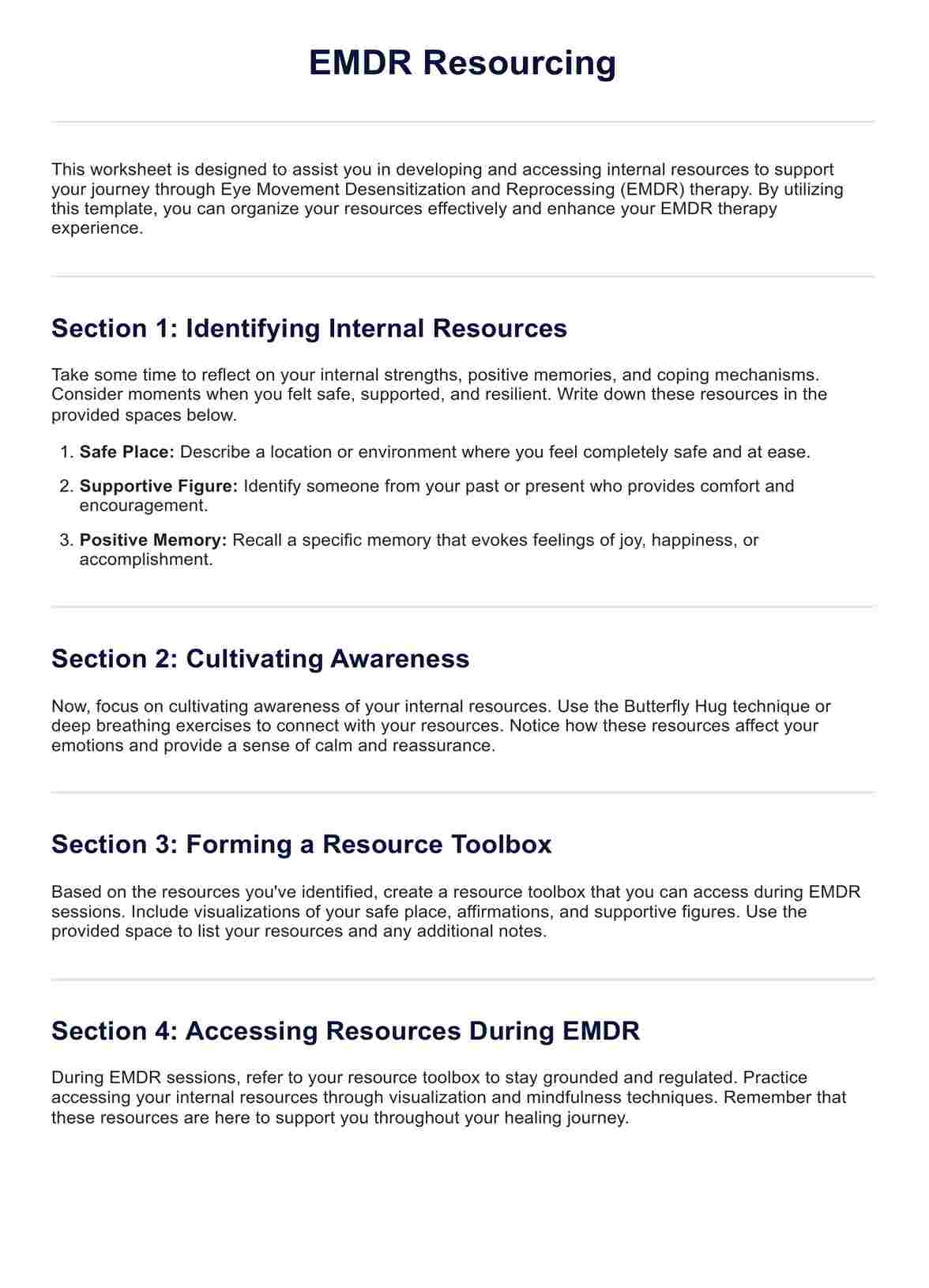Resourcing in EMDR refers to identifying and strengthening internal and external supports to help individuals feel safe and grounded during therapy sessions. It involves cultivating positive resources such as safe places, supportive figures, and coping strategies to enhance resilience and facilitate healing.

EMDR Resourcing PDF
Download Carepatron's free PDF with examples of EMDR resourcing techniques. Explore different ways to support your clients with effective resourcing strategies.
EMDR Resourcing PDF Template
Commonly asked questions
Dyadic resourcing in EMDR involves bilateral stimulation, such as eye movements or tapping, between the therapist and the client to enhance the development and strengthening of internal resources. This technique promotes a sense of connection and collaboration between the therapist and the client, facilitating the integration of positive resources into the healing process.
Individuals who have untreated psychosis, severe dissociative disorders, or are currently experiencing active substance abuse may not be suitable candidates for EMDR therapy. It is vital for individuals to have sufficient stability and coping skills to engage safely in the EMDR process.
EHR and practice management software
Get started for free
*No credit card required
Free
$0/usd
Unlimited clients
Telehealth
1GB of storage
Client portal text
Automated billing and online payments











